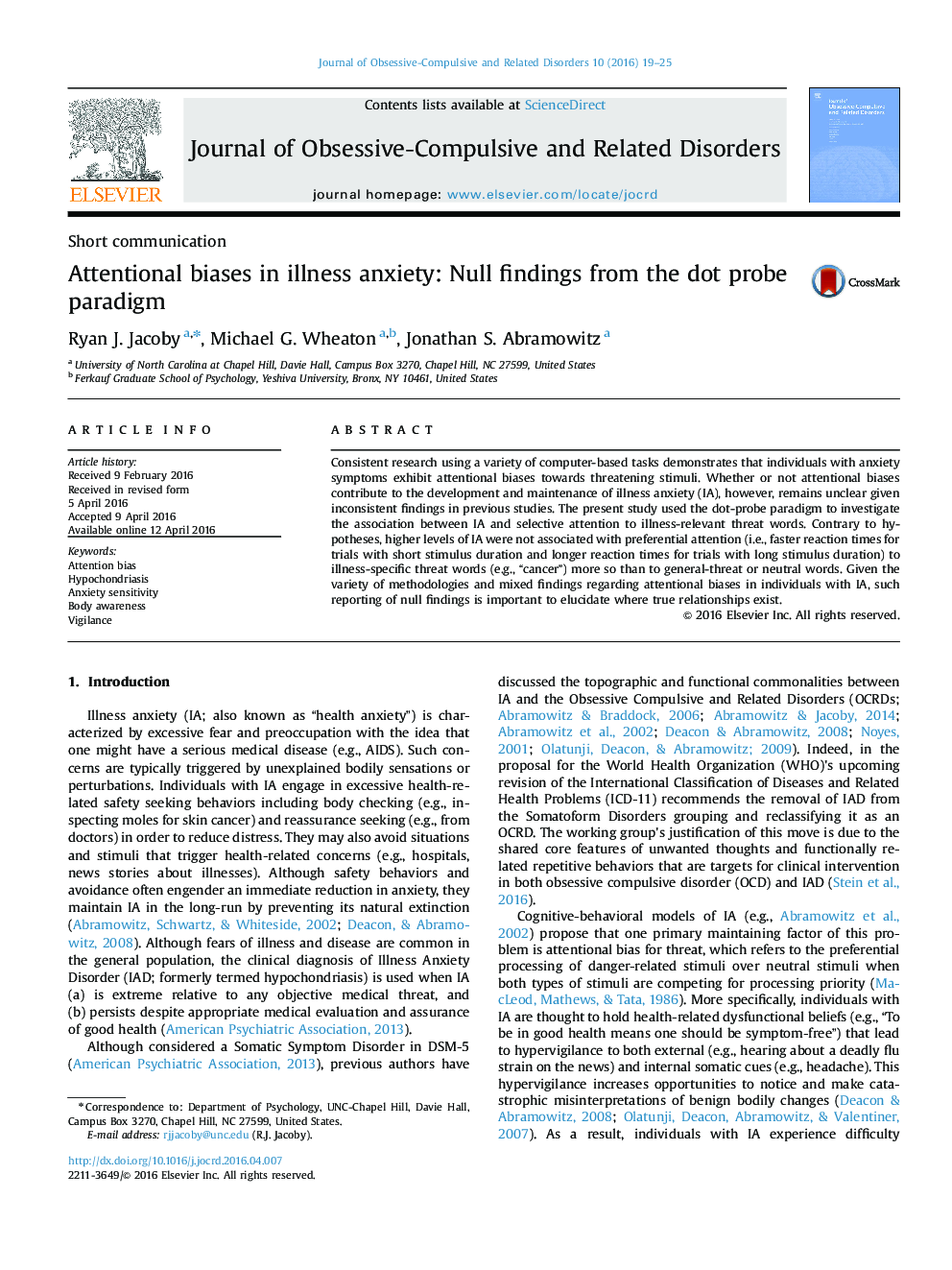| Article ID | Journal | Published Year | Pages | File Type |
|---|---|---|---|---|
| 912169 | Journal of Obsessive-Compulsive and Related Disorders | 2016 | 7 Pages |
•We investigated the association between IA and selective attention to illness threat words.•Higher IA not associated with RT in response to illness words (vs. general-threat or neutral words).•Explanations for null findings and directions for future research are discussed.
Consistent research using a variety of computer-based tasks demonstrates that individuals with anxiety symptoms exhibit attentional biases towards threatening stimuli. Whether or not attentional biases contribute to the development and maintenance of illness anxiety (IA), however, remains unclear given inconsistent findings in previous studies. The present study used the dot-probe paradigm to investigate the association between IA and selective attention to illness-relevant threat words. Contrary to hypotheses, higher levels of IA were not associated with preferential attention (i.e., faster reaction times for trials with short stimulus duration and longer reaction times for trials with long stimulus duration) to illness-specific threat words (e.g., “cancer”) more so than to general-threat or neutral words. Given the variety of methodologies and mixed findings regarding attentional biases in individuals with IA, such reporting of null findings is important to elucidate where true relationships exist.
